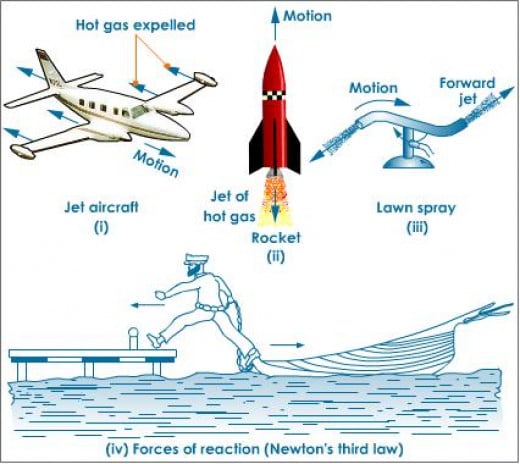A plane s ability to fly can be explained through a scientific theory called newton s third law of motion this law states that for every action there is an equal but opposite reaction

The Fascinating Connection between Newton's Third Law of Motion and an Airplane's Flight
Have you ever wondered how an airplane manages to fly gracefully in the sky? The answer lies in a scientific principle known as Newton’s Third Law of Motion. This fundamental law states that “for every action, there is an equal, but opposite, reaction.” Let’s delve into this principle and discover how it enables airplanes to soar through the air.

Newton’s Third Law of Motion plays a vital role in the field of aerodynamics, the study of how objects move through the air. When a plane takes off, it generates thrust by expelling air backwards. According to Newton’s law, this action creates an equal and opposite reaction that propels the aircraft forward.
To understand this concept more effectively, let’s consider a simple example. Imagine you are standing on a skateboard, and you throw a heavy ball in one direction. As soon as you release the ball, you will notice that you start moving backwards due to the reactive force generated by throwing the ball forward. This showcases Newton’s Third Law in action.
Similarly, an airplane’s engines forcefully expel a significant amount of air backward, creating a reactive force that propels the aircraft forward. This forward thrust allows the plane to overcome gravity and initiate its flight. The faster the plane expels air, the stronger the reactive force, resulting in greater acceleration and speed.

Furthermore, Newton’s Third Law helps explain how planes maneuver and change direction in the air. By adjusting the angle and position of the control surfaces, such as the ailerons, elevator, and rudder, pilots can manipulate the reactive forces acting on the aircraft to achieve desired movements. For instance, pulling the control yoke or joystick backward increases the angle of attack on the wings, generating more lift and allowing the plane to climb. On the other hand, pushing the control yoke forward decreases the angle of attack, reducing lift, and facilitating descent.
In addition to lift, Newton’s Third Law governs other crucial aspects of flight, including drag and thrust. While lift is responsible for keeping airplanes airborne, thrust is necessary for maintaining forward motion. As the engines continuously expel air backward, an equal and opposite reactive force, or thrust, propels the plane forward. On the contrary, drag is the resistance encountered by an aircraft as it moves through the air. By carefully balancing thrust and drag, pilots can achieve an optimal speed and efficiency needed for a safe and smooth flight.
In conclusion, Newton’s Third Law of Motion serves as the foundation for understanding the basic principles of flight. By generating thrust through the expulsion of air, an airplane creates an equal and opposite reaction that propels it forward, overcoming gravity and initiating flight. This scientific concept not only explains how airplanes take off but also guides pilots in maneuvering and maintaining control during their journey through the skies.
(Source: How Airplanes Work)
Tags
Share
Related Posts
Quick Links
Legal Stuff

